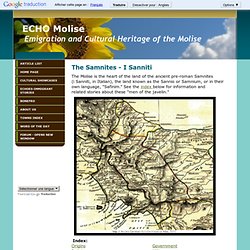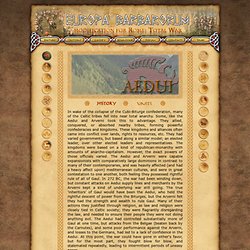

The History of Rome. Roman Goddess Etruscan Goddess ancient rome Juno Italic goddess pagan gods and goddesses Roman Gods and goddesses wiccan wicca paganism pagan Thalia Took. The Goddesses of ancient Rome have various origins, as one might expect of the Pantheon of a conquering people.

Many have their roots in the ancient tribes of the Italian peninsula, such as the Oscan, Umbrian, or Picene peoples, who were related culturally and linguistically to the Latins, and who were eventually absorbed into the Roman Republic. (The linguistic exception, of course, is the Etruscans: though Rome adopted or inherited a sizeable portion of its religious doings from them, the Etruscan language is not related to Latin. Well, to be more precise, it is not related to anything at all, though loopy theories abound.) Some Goddesses come from a bit farther afield, brought by folk like the Greeks settlers who founded a colony in south-western Italy called Magna Graecia, which is why "Naples" comes from the Greek Neapolis, or "New City". In later times, Goddesses from an even wider understanding of the world were imported from places like Egypt and Syria.
Kerri. Surnames of the Aemilii. Article by Nephele.

Evan1965's Channel. Lindybeige. Subscribe to my channel: Here's a weapons videos playlist: At long last I have got round to editing a trailer for my channel.

My editing software had quite a struggle dealing with the many video formats all at once. Actually, I think that the old footage old VHS and mini-DV formats holds up reasonably well next to the modern HD stuff. For those who like to buy merchandise linked to YouTube channels, there may be some stuff in the nearish future from this one. Lindybeige: a channel of archaeology, ancient and medieval warfare, rants, swing dance, travelogues, evolution, and whatever else occurs to me to make. ▼ Follow me...
Twitter: I may have some drivel to contribute to the Twittersphere, plus you get notice of uploads. Facebook: (it's a 'page' and now seems to be working). Google+: "google.com/+lindybeige" website: www.LloydianAspects.co.uk Lindybeige channel trailer Show less. Dan Carlin - Podcasts, Merchandise, Blog, and Community Website. Untitled. Dictionary of Greek and Roman Geography (1854), LIGU´RIA. In regard to the national affinities or origin of the Ligurians themselves, we are almost wholly in the dark.

We know only that they were not either Iberians or Gauls. Strabo tells us distinctly that they were of a different race from the Gauls or Celts who inhabited the rest of the Alps, though they resembled them in their mode of life. (Strab. ii. p.128.) And the same thing is implied in the marked distinction uniformly observed by Livy and other Roman writers between the Gaulish and Ligurian tribes, notwithstanding their close geographical proximity, and their frequent alliance in war.
Dionysius says that the origin and descent of the Ligurians was wholly unknown, and Cato appears to have acquiesed in a similar conclusion. Historical Movies in Chronological Order. (UNDER CONSTRUCTION -- I'm watching and writing about these movies as fast as I can, but it is going to take awhile.)

Used a lot of Wikipedia, IMDb and amazon.com email: plc47@optonline.net Patrick Louis Cooney, Ph. D., sociologist, historian, botanist Copyright © 2006 by Patrick Louis Cooney. What do the X's mean?
Samnites. Hill Forts The oldest Samnites built a circuit of over 100 forts along the hills and mountains of the Molise.

They chose highly defensible positions, some higher than 1,200 meters (4,000 feet) above sea level. They designed the forts to take advantage of natural defenses, with one, two or three walls formed by the hillside, and built remaining walls of huge blocks of hewn stone, stacked without mortar (called "polygonal"). Monte Vairano (14 km north of Bojano), already a large Samnite settlement by the fourth century B.C., was one of the largest hill-forts. Three kilometers (1.8 miles) of stone walls, spotted by three gates and a series of towers, enclosed the buildings and streets leading to the center. Major forts, such as those found at Monte Vairano, Frosolone, Terravecchia (Sepino), and Monte Saraceno at Cercemaggiore became a refuge for the surrounding population during times of crisis. Pietrabbondante Campochiaro. Sepino. San Giovanni in Galdo. Back to top. The Samnites. Europa Barbarorum. In wake of the collapse of the Cubi-Biturge confederation, many of the Celtic tribes fell into near total anarchy.

Some, like the Aedui and Arverni took this to advantage. They allied, conquered, or absorbed nearby tribes, forming powerful confederacies and kingdoms. These kingdoms and alliances often came into conflict over lands, rights to resources, etc. They had varied governments, but based along a similar model; an elected leader, over other elected leaders and representatives. The kingdoms were based on a kind of republican-monarchy with amounts of anarcho-capitalism.